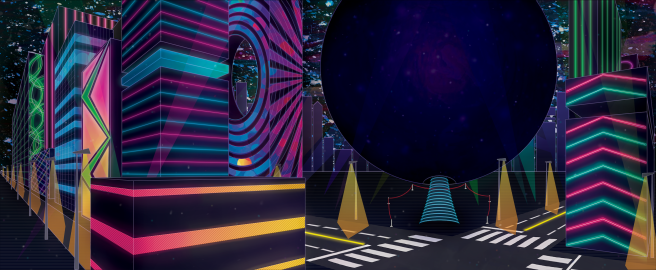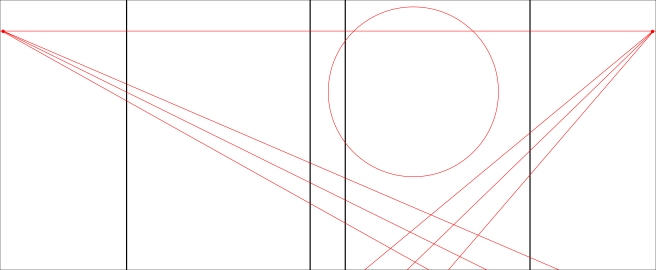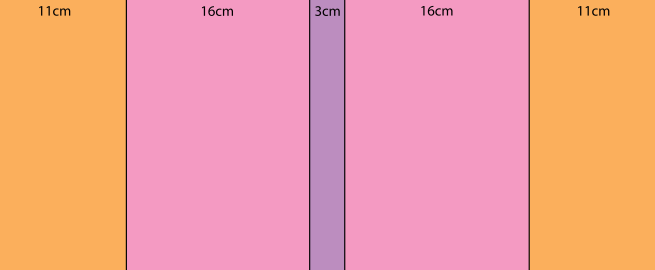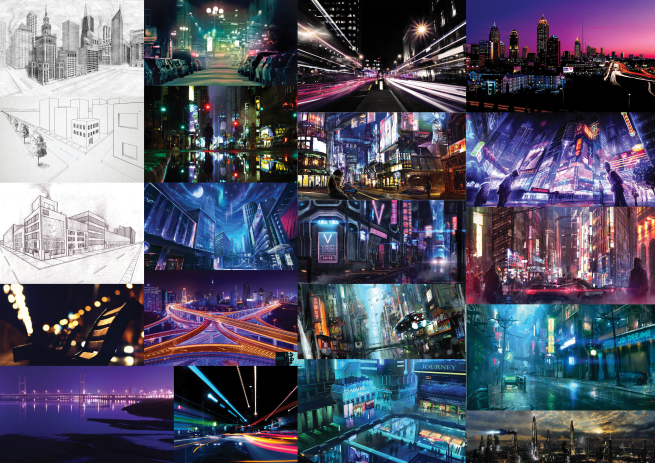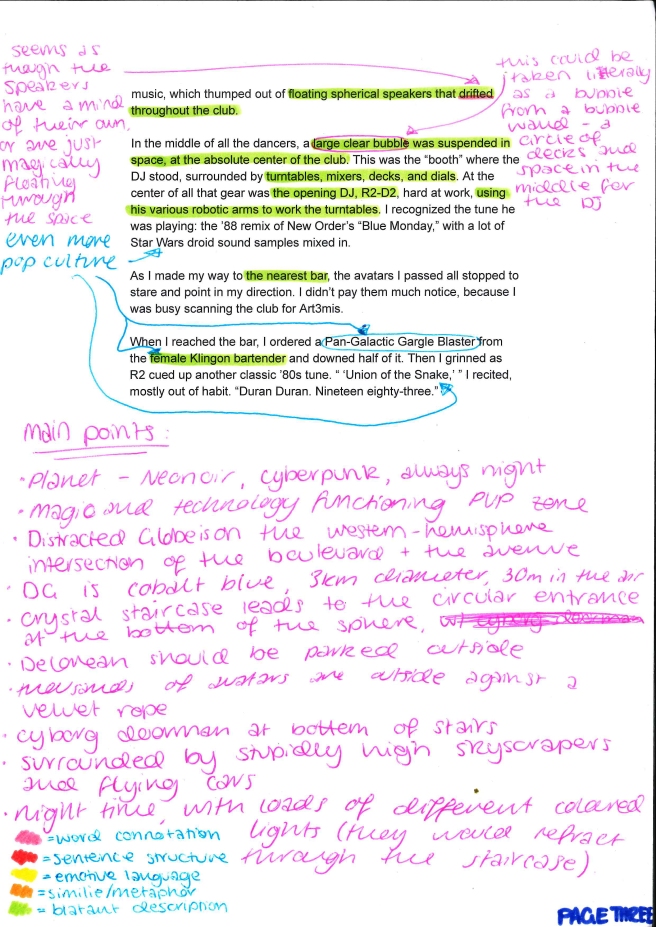What was your project about? What happened during it?
My final major project was sparked by the idea of creating a visual image from written word; taking a world that an author has so avidly described, and bringing it to life in a tangible form. I took this inspiration and looked into the work of artists that I admired – such as Mary Grandpré and Feng Zhu – to form a plethora of ideas which evolved into the essence of my final piece – a hardback dust cover.
My plan for creating the book cover was to take a section of text from a book which described a landscape, analyse the text, and use the analysis to compose what I thought the landscape would look like. I would then use the drawing to create a multi-media piece, and layer text over the top of the artwork to create the cover.
What was inspiring about the project to you, and how did you translate this into your work?
My main inspiration for the project initially came from my Mother, who told me that she could never visualise the places that were described in books. This idea led me on to consider how interesting it was to me, as somebody who has no trouble visualising written word, seeing other people’s perspective on how something might look.
I carried these concepts with me throughout my project, and as I became more inspired by other artists’ work, the more inspired I was to create my own rendition of what my mind’s eye saw as I read a section of text. I translated this inspiration into drive.
Did you manage to achieve what you set out to do at the start of the project?
In essence, I achieved what I had set out to do at the start of the project, but not in the quantity that I had originally set out to complete.
I had originally planned to create five or more different book covers for books I had never read before, in order for them to be 100% uninfluenced by any other pre-existing knowledge I had about the book, or what the places within them looked like.
However, after having discussions with my peers, my lecturers, and a visiting graduate, I changed my mind and decided to create only three book covers of books I had read before and was familiar with.
This was then later reduced to just one cover, in order to give me enough time to create one very high quality, polished piece, as opposed to three pieces of a lesser quality. However, the idea for my project remained the same throughout all of these changes.
How did you feel about what happened through the project? What was good about the experience?
For this project, I intentionally set the bar very high for myself from the beginning in order to really push the boundaries of what I thought I was capable of. Though this did cause me a fair amount of stress throughout the project, I think it helped me produce some very high-level work in the time that I gave myself to complete tasks.
Reducing my workload from over five book covers down to one definitely let me de-stress and gain some more confidence, allowing me to really push myself and create a beautiful final piece without struggling to juggle several covers at once.
What new techniques, skills, and abilities have you acquired through this project and how have they developed your creative work?
In this project, I taught myself how to use gouache paint. One of my main goals was to learn at least one new medium and incorporate it into my final piece, so I experimented with gouache paint until I was comfortable enough to create some interesting patterns and textures. This is an extremely transferable skill to me, as I work with watercolour and acrylic paint frequently and gouache is a wonderful addition to my skill set.
Additionally, during this project, I worked very hard on my time management skills – something which I have constantly struggled with in previous projects. I think this has greatly improved not only my work ethic but the quantity and quality of work I produce, as sticking to a pre-determined schedule helps me to know what work I have done, and what work I should be doing.
Overall, what did not go as well as anticipated throughout the project? Why?
One of the elements I wanted to include in this project was using mixed media. While I did achieve this by including textures and patterns I made with gouache paint, I was very much hoping to use more than just paints and Photoshop. However, I did not give myself enough time to create these textures with different materials so I worked with the ones I had already created through experimentation. If I were to redo this project, I would allocate myself more time to create interesting textures and patterns, as I think it would really add to the overall feeling of the piece.
Additionally, I was not able to include a lot of the references I was hoping to put into the cover. I made the decision to leave out any people, text, and cars that would be in the scene, in favor of purely creating the landscape. I did this so that I didn’t totally overcrowd the image, and I was able to leave at least some negative space and allow the piece some room to breathe. However, in doing this I feel as though I sacrificed a lot of what I was hoping to include within the image – perhaps if I was just creating a landscape and not intending it to be a book cover I would have added some more intricate details and references.
How do you feel about your project as a whole?
Overall I am extremely proud of my project. I think the final product is even better than the vision I had of it in my head, and while there is definitely room for improvement within it, given the time period I granted myself to create it in it looks stunning. I have definitely been able to showcase my favourite elements of the book covers I researched, from the bold text, geometric shapes, and gradients of Welcome to Night Vale, to the bright, bold colours from Snuff.
I feel as though the book cover was very well-received by my peers, lecturers, and family, and many people had high praise for the landscape itself. The whole premise of my project was to create a visual image from written word, and I most definitely achieved that goal. Several people have even asked me where they can buy the book the cover is based upon! Overall, my project has received an amazing response, and I am very proud of the work I have created.

